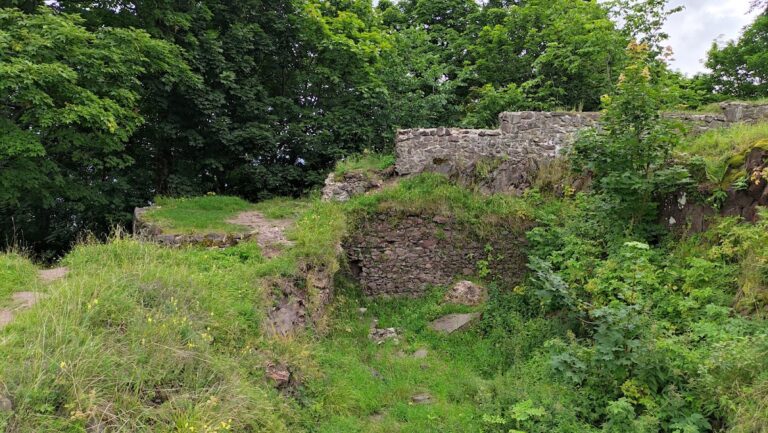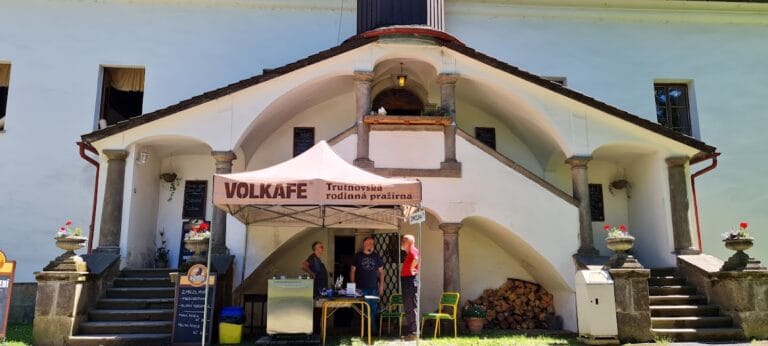Radosno Castle: A Medieval Fortress in Poland
Visitor Information
Google Rating: 4.2
Popularity: Low
Google Maps: View on Google Maps
Country: Poland
Civilization: Medieval European
Remains: Military
History
Radosno Castle is located in the municipality of Rybnica Leśna in modern-day Poland. It was constructed during the medieval period by the local Silesian civilization, likely in the latter half of the 13th century. Originally, the stronghold belonged to the Duchy of Świdnica-Jawor, a territorial entity that played an important role in the region’s political landscape.
The castle’s early history is closely connected to key regional rulers such as Duke Bolko I of Świdnica-Jawor and his successor, Duke Bolko II the Small. Documents from the mid-14th century mention Radosno Castle as a royal fief under Bohemian sovereignty, indicating its integration into wider Central European power structures. Over time, ownership passed through various noble families, including the Swenkinvalds, Hersko of Rozkowice, and later came under the control of the bishops of Wrocław, as well as the Seidlitz and Rechenberg families.
Situated on a strategic border facing Bohemia, Radosno Castle served as a defensive fortress protecting a medieval trade route vital to regional commerce. Together with nearby castles such as Rogowiec, Grodno, and Nowy Dwór, it formed part of a chain of fortifications guarding this frontier zone. During the religious conflicts known as the Hussite Wars in the early 15th century, the castle endured two recorded sieges in 1427 and 1434, though contemporary records do not confirm whether it was seized on either occasion.
By the 15th century, the fortress gained a darker reputation as a refuge for robber knights who disrupted local security. This criminal activity led to its partial destruction in 1443 when citizens of the nearby city of Wrocław, supported by military forces, attacked and damaged the castle. Rebuilding efforts were undertaken in 1466 by the Schellendorf brothers, who continued the practice of banditry from the stronghold.
The castle remained contested during the regional power struggles, as evidenced by its seizure by forces under the Hungarian king Matthias Corvinus in 1483. Ultimately, the stronghold was decisively destroyed in 1497 under the orders of King Vladislaus II Jagiellon. Following this final assault, Radosno Castle was abandoned and fell into ruin, ending its active role in the region’s defense and administration.
Throughout its existence, Radosno Castle also served as the administrative center for a domain that included the nearby town of Mieroszów and several surrounding villages, underscoring its importance beyond purely military functions.
Remains
The remains of Radosno Castle reveal a complex medieval fortress built predominantly from local stone materials. The earliest and most prominent feature was a large cylindrical tower, originally around 7.2 meters in diameter, constructed from durable melaphyre rock quarried nearby. This tower was designed for defense, with its entrance raised approximately four meters above ground level to hinder attackers. Positioned on the highest point of the castle’s southeastern side, this tower guarded the most vulnerable approach to the site.
Surrounding the tower, the initial wooden and earthen defenses were replaced during the 14th century by substantial stone walls enclosing a roughly rectangular courtyard of about 300 square meters. This enclosed space housed residential and economic buildings arranged within the fortified perimeter. The castle’s overall layout encompassed a main section measuring approximately 17 by 30 meters, with the residential quarters located in the northern corner and the main cylindrical tower in the southeastern corner.
In addition to the round tower, a quadrangular tower measuring around 6 by 6 meters stood integrated into the defensive wall on the northwestern side. This tower contained the main gate, controlling access into the stronghold. Adjacent to the southern side of the castle proper lay a smaller rectangular outer bailey measuring about 14 by 18 meters, which likely served as an additional layer of defense or space for auxiliary activities.
Defensive ditches carved directly into the rock surrounded the fortress, varying from 3.5 to 7 meters wide and reaching depths of up to 4 meters, further impeding any assault on the walls. Today, the most visible surviving element is a 12-meter-high lower section of the principal cylindrical tower. Archaeological efforts have also uncovered small fragments of the residential building near the northwestern edge of the complex, lying at ground level.
The castle occupied a spur that jutted into a small side valley known as Freudengraben. A medieval road passed approximately 50 meters south of the summit, providing an approach path from the east. The nearby fortress of Rogowiec, situated about four kilometers to the east, formed part of the defensive network that included Radosno.
These structural remnants collectively offer insight into the fortification’s design, defense tactics, and strategic placement in a contested borderland during the medieval era.










